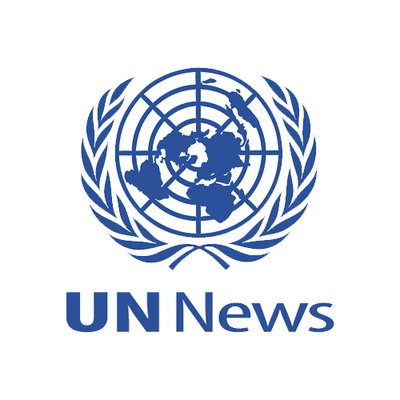Leaders from landlocked developing countries, (LLDCs) will gather in Gaborone, Botswana, this December to tackle challenges, explore solutions, and build alliances for a more equitable and prosperous future.
At the Third UN Conference on Landlocked Developing Countries, known as LLDC3, innovative solutions and strategic partnerships will be outlined and leveraged to “unlock the full potential of these nations.”
LLDC3 is set to take place from 10-13 December.
Here’s what you need to know about LLDCs and plans for this year’s conference:
What are LLDCs?
LLDCs, according to the UN Office the deals with issues related to some of the world’s most vulnerable nations (OHRLLS), are countries that lack direct access to the sea, which isolates them and hinders their ability to engage in international trade, connectivity, and economic development.
OHRLLS said the average distance of LLDCs to the seaport is about 851 miles.
Therefore, these countries are forced to depend on “neighbouring transit countries” for accessing international markets which results in higher transportation trade costs – double the transport costs of their neighbours – and delays in commodities movement.
Their dependency on neighbouring nations for transport trade often leaves them with the possibility of political and economic instability in transit countries.
The challenges faced by LLDCs often leave them with “reduced foreign direct investment, limited export opportunities, and slower economic growth.”
Which countries are LLDCs?
There are 32 LLDCs across Asia, Africa, Europe, and South America. These include countries like Afghanistan, Botswana, Ethiopia, and Paraguay. Ethiopia is the largest, with a population of around 115 million, while Bhutan is the smallest, with fewer than one million people.
OHRLLS has reported that about 40 per cent of LLDC populations live in slums and nearly half of the countries experience severe food crises.
Further, the working populations of LLDCs reportedly earn just $1,500 annually which is significantly lower than the global average of about $11,000 annually.
What is the history of the LLDC conference?
The LLDC conferences began when the international community, especially the UN, recognised that landlocked countries required special attention and policies to address their unique challenges.
The first conference, held in 2003 in Almaty, Kazakhstan, was primarily driven by the UN through the OHRLLS.
That conference marked the launch of the LLDC agenda, focusing on improving transit cooperation and trade facilitation to better integrate LLDCs into the global economy. The Almaty Programme of Action, adopted at this conference, set the framework for ongoing international cooperation, leading to subsequent conferences that built on its progress.
The second conference, held in Vienna, Austria in 2014, aimed to thoroughly evaluate the progress of the Almaty Programme of Action and review trade and transit cooperation policies in light of new challenges and opportunities. It also sought to renew global commitment to supporting LLDCs by developing a new partnership framework for the next decade.
The Third UN Conference on LLDCs will serve under the theme “Driving Progress through Partnerships.”
Rabab Fatima, the Under Secretary-General and High Representative for LLDCs said this year’s theme captures the underlying need for the accelerated advancement of LLDCs.
“Given their unique territorial constraints, partnerships are not just beneficial but indispensable,” Ms. Fatima said.
“By collaborating closely with international organizations, the private sector, and neighbouring countries, LLDCs can develop integrated transportation networks, enhance trade, share best practices, and ultimately overcome their inherent challenges to achieve sustainable development,” she continued.
The High Representative further said as the time for the conference approaches, there needs to be an acknowledgement of the “persistent challenges” LLDCs face.
She said a new programme of action will address the concrete issues experienced by the landlocked developing countries with practical solutions.
“This programme represents not only a strategic roadmap but also a commitment to ensuring real, impactful change for the millions of people living in LLDCs,” Ms. Fatima said.
What are the hopes for this year’s conference?
Permanent Representative of Botswana to the UN for LLDC3, Gladys Mokhawa, said this year’s conference marks a “historic moment not to be missed” as this is the first such event focused on landlocked nations held in Africa.
“Botswana is ready to offer her unique hospitality and a platform for shaping a transformative decade of Action for Landlocked Developing Countries,” Ms. Mokhawa said.
The UN Resident Coordinator in Botswana, Zia Choudhury, said the country is excited to host the conference and together with governments, civil societies, and other partners will create the Gaborone Programme of Action – a 10-year plan which will outline what LLDCs and partners will do to overcome structural challenges of the landlocked countries.
Mr. Choudhury said the key to a successful conference is to ensure “we get the right people into the room,” which would include a diverse range of people from government officials to members of youth organizations.
“One thing personally, I’ll be asking the young people of Botswana to do is to make sure you know what the targets are set by the government here and other places and make sure that you are holding government and other players to account are the implementing the plan,” Mr. Choudhury said.
“So, this is the role for future generations,” he continued.
The Resident Coordinator said he hopes people will leave the conference with a sense that LLDCs are part of the future of development in Africa and across the globe.
“People will see how much we have to offer,” Mr. Choudhury said.
Distributed by APO Group on behalf of UN News.

